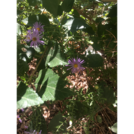
Students will work in teams to determine how to best conduct an experiment outdoors to see if plants need sunlight and water to grow.
- Subject:
- Life Science
- Material Type:
- Lesson Plan
- Author:
- Out Teach
- Date Added:
- 07/22/2021
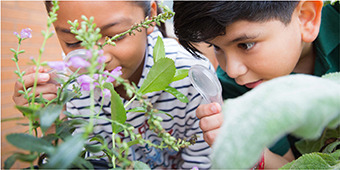

Students will work in teams to determine how to best conduct an experiment outdoors to see if plants need sunlight and water to grow.

STUDENT ACTIVITY - 2nd Grade: This is a distance-learning lesson students can complete at home.Students will conduct a simple experiment to see if plants need sunlight and water to grow.This activity was created by Out Teach (out-teach.org), a nonprofit providing outdoor experiential learning to transform Science education for students in under-served communities.

Students play the Animal Parents & Babies Matching Game to study the similarities and differences between babies (offspring) and their parents. They explore their outdoor space in search of plant offspring and parents and share their findings with peers. As a culminating activity, students create additional Parents & Babies index cards and life cycle posters to further investigate and compare the life cycles of various animal and plant species.

Students explore the school garden to make observations and inferences about which plants thrive in the current environment and which plants may decline or even perish. Students then generate scenario cards to describe situations where plants or humans thrive, decline, or perish. By constructing and monitoring an “Earth System in a Bottle”, students investigate which environmental conditions are needed for plants to thrive.
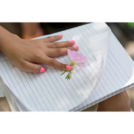
STUDENT ACTIVITY - 3rd - GA/TXThis is a distance-learning lesson students can complete at home.Students will explore the outdoors for examples of different plant structures and determine how plants use these structures to meet their needs.This activity was created by Out Teach (out-teach.org), a nonprofit providing outdoor experiential learning to transform Science education for students in under-served communities.
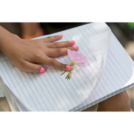
Students will explore the garden/outdoor classroom for examples of different plant structures and determine how plants use these structures to meet their needs.

Students play the Up, Down, and All-Around game in the outdoor space describing the relative positions of a chosen object or organism. Back in the classroom, students open a sugar snap pea, count the number of peas in the pod, and describe the relative position of the peas. Using the three-dimensional Peas in a Pod paper cut-out model, students practice counting and describing the positions of the peas in the peapod. Students then explore the motion of objects using a crafted paper model whirly bird representing a maple seed pod.Finally, studentscreate and enact a skit with partners to show and describe the relative positions of humans (themselves) and go back outdoors to move through a sidewalk chalk obstacle course to show their knowledge of various motions.
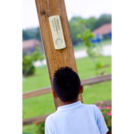
In this lesson, students will take temperature readings in the outdoor classroom, compare them to data from a graph, and discuss the numerical differences between the readings and the data.
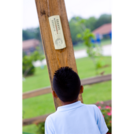
In this lesson, students will take temperature readings in the outdoor classroom, compare them to data from a graph, and discuss the numerical differences between the readings and the data.
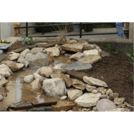
Students will observe and describe the physical properties of water by exploring water at different stations

Students, taking on the role of meteorologists, make observations of local weather to determine if the school garden is getting enough rain to give the growing plants the water that is needed. Students read science-based texts about how to plant and maintain a garden and about planting fruits/vegetables in patterned rows. They will use that information and their background knowledge to develop a plan for planting that will require them to count plants and arrange them in rows so the plants can share water and resources.

Students will observe and record the changes caused by weathering and erosion from moving water have on limestone.
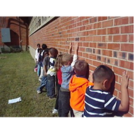
Students will explore the different areas of the garden to determine how warm or cool it feels.

Students study photos and look for clues regarding weather conditions and seasonal variations. Students make and record weather measurements in their outdoor space, including temperature, precipitation, wind speed and direction, humidity (optional) and cloudiness over time. As a culminating activity, students study local climate patterns to determine the best time to plant fruits and vegetables in their outdoor space and create analogies to describe the difference between weather and climate.
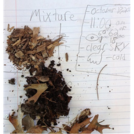
Students will recognize that mixtures are made when two or more materials from the garden are mixed together and the physical properties do not change.

Students harvest garden fruits and vegetables to study their content in terms of the states of matter. They dry a piece of fruit or vegetable using a built solar oven to determine the liquid vs. solid content. Students build definitions of solids, liquids, and gases using a Frayer Model and write step-by-step procedure to explain to someone how to successfully determine how much water is in a watermelon or how to make a frozen popsicle from a strawberry liquid.
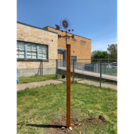
STUDENT ACTIVITY - 1st -- TXThis is a distance-learning lesson students can complete at home.Students will gather evidence that the wind is moving by creating windsocks.This activity was created by Out Teach (out-teach.org), a nonprofit providing outdoor experiential learning to transform Science education for students in under-served communities. .
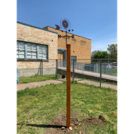
Students will observe that air is moving objects by creating wind socks.
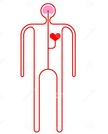
Students monitor and record their heart rate and breathing rate during rest, mindfulness activities, and outdoor activity. Through reading nonfiction text (or watching similar content via video) students learn about the respiratory and circulatory systems structures and functions in order to craft an individualized “Eco-exercise or Mindfulness” Plan that includes OUTDOOR exercise or mindfulness activities to keep their circulatory and respiratory systems healthy. Students begin a “Healthy Mind, Healthy Body, Healthy ME” journal that will be continued in later lessons.